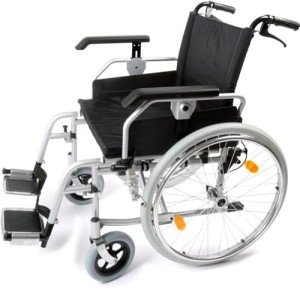Bariatric Wheelchair Seat Width
Seat Width
Having the proper seat width is necessary to wheelchair users who invest longer periods in their chairs. Too narrow a seat will trigger pressure on the hips and thighs which could result in sores or pressure points. Having self propelled bariatric wheelchair can likewise make it tough for the user to reach the hand rims to propel themselves or maneuver in little areas.
To measure the right seat width a person would sit on a chair usually and have their measurement taken throughout their lap at the largest point which is generally their hips. A wheelchair determining tape can be utilized to measure this, however a backyard stick is chosen as it avoids individuals from wrapping the tape around their hips which would give an incorrect result.
The basic wheelchair seat width is 16" (narrow grownup), 18" (standard grownup), and 20" (wide grownup). For bariatric clients, a 24" seat is available. This sturdy extra broad bariatric wheelchair from Medline includes swing-away footrests, a carbon steel frame with rust- and chip-resistant chrome plating, and easy-to-clean vinyl upholstery. It has a weight capacity of 500 pounds.
Seat Depth

Typically, the seat depth of a bariatric wheelchair was included 2" to the measurement taken at the user's largest point (normally their hips). This was implied to accommodate additional layers of clothes that may be worn throughout winter. However, this practice is ending up being less typical as wheelchair users are able to invest more time indoors and are not wearing long coats. This makes the seat depth of a chair lesser when choosing a bariatric wheelchair. Nevertheless, it is still essential to pick an alternative that provides sufficient assistance for bigger users.
The Medline folding extra wide bariatric manual wheelchair features a comfortable 24" seat width and a sturdy slide tube silver vein frame. It also has an adjustable axle and tool-free raising legrests.
Seat Height
When it pertains to determining the correct wheelchair seat width you need to always determine from the user's largest point which is typically their hips. You will also need to think about whether the user is going to be using a winter season coat as this might include 2" to the width required.
When a wheelchair is in use it need to only be run on level surface areas with the wheel locks fully engaged. This is to avoid the chair from having the ability to move inclines that are 10 degrees or higher. It is likewise crucial to bear in mind that any activity that may shift the center of mass in the chair ought to be done with care. This includes reaching for products that require the person to lean out of their seat or attempting to stand up from it.
Whenever you have the chair in use it is recommended that you regularly check it for damage and oil any locations that are deemed required. For instance, the casters ought to be lubricated by eliminating the caster fork and using a multi-purpose grease to use to the caster stem bearings. Similarly, the foot plates can be changed by loosening up the bolt and after that moving them to the preferred position. This permits the feet to sit easily on the footplate and avoids any pressure points from forming. This can be very uncomfortable for the user and if left ignored, can result in push sores.
Weight Capacity
Bariatric wheelchairs are designed to support more weight than standard wheelchairs. This makes them sturdier and much better geared up to handle falls. They are also generally bigger and wider, making them less maneuverable in tight areas than basic wheelchairs. They require cars with unique ramps and lifts to pack them, along with motorists who know how to best transport them from one location to the next.
When picking a wheelchair, consider its weight capacity as it will be the main determining consider whether it will accommodate your passenger's requirements. The weight capacity of the chair is frequently listed as a static load, indicating that it shows the amount of weight the chair can comfortably hold while stalling. However, some makers also list an active load that is based upon a drop test and can mimic the result of someone sitting down in the chair. This may be a more reputable measurement of the weight limit, depending upon your requirements.
If you plan to perform activities that shift your center of gravity in the seat (such as reaching for items), be sure to have front casters pointed in a forward instructions and wheel locks engaged so the chair will not tip over. Also, examine that visit the next internet site are lubed routinely to prevent extreme wear and abrasions. The lubrication treatment involves removing the fork, separating the caster from the wheel, and greasing the caster stem bearings with high-quality multi-purpose grease.
